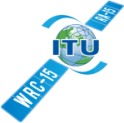 The 2016 edition of MWC had two key themes: 5G and IoT. Both themes are positioned as potential revenue drivers for MNOs, but they are diametrically opposed propositions. These themes enforce the status of the MNOs as connectivity providers. Connectivity is a (necessary) commodity; 5G and IoT will take time to unfold as bounded by the requirements of investments and market development. But behind the limelight, the Internet giants and OTTs continue to lead the evolution towards network virtualization, while leveraging their inherent cloud and big data advantages, and as such, driving towards major market disruption. New business models are now possible that may render the MNOs to spectrum holders as service delivery is achieved through multiple channels with the cellular network being one of many such channels. Continue reading
The 2016 edition of MWC had two key themes: 5G and IoT. Both themes are positioned as potential revenue drivers for MNOs, but they are diametrically opposed propositions. These themes enforce the status of the MNOs as connectivity providers. Connectivity is a (necessary) commodity; 5G and IoT will take time to unfold as bounded by the requirements of investments and market development. But behind the limelight, the Internet giants and OTTs continue to lead the evolution towards network virtualization, while leveraging their inherent cloud and big data advantages, and as such, driving towards major market disruption. New business models are now possible that may render the MNOs to spectrum holders as service delivery is achieved through multiple channels with the cellular network being one of many such channels. Continue reading
IoT in the Home: Funding
 Smart home startups took $454 million in investor funding in 2014, an increase of 57% over 2013[1]. Among the largest deals in the space over the past six months include a $38MM Series B from Bessemer Venture Partners, Comcast Ventures and Qualcomm Ventures to August (smart locks) and a $31.8 million Series B to connected home software platform Zonoff from investors including Grotech Ventures and Valhalla Partners.
Smart home startups took $454 million in investor funding in 2014, an increase of 57% over 2013[1]. Among the largest deals in the space over the past six months include a $38MM Series B from Bessemer Venture Partners, Comcast Ventures and Qualcomm Ventures to August (smart locks) and a $31.8 million Series B to connected home software platform Zonoff from investors including Grotech Ventures and Valhalla Partners.
IoT in the Home: Emerging Trends
 The adoption of wireless technologies for connectivity has shaken up the home automation market unleashing a number of trends:
The adoption of wireless technologies for connectivity has shaken up the home automation market unleashing a number of trends:
The race to own the gateway. Home automation devices connect to the Internet through a gateway in the home. A standalone hub, cable set-top boxes, xDSL routers, a tablet may all serve as potential gateways. Established and startup companies are in fierce competition to own the gateway: Insteon (Microsoft), Nexia, Revolv (Google), SmartThings (Samsung), VeraLite, Wink (GE) are a few examples. The gateway owner furthers the chances of its technology platform, increases hold on the user and potentially gains access to a wealth of information on user behavior to derive additional revenues. Continue reading
IoT in the Home: Market Players
 Home automation is an active market with many players approaching it from different angles:
Home automation is an active market with many players approaching it from different angles:
Technology giants: Apple (HomeKit, iOS), Google (Nest, Android), Samsung and Microsoft (Xbox, Windows) best exemplify this segment. These companies leverage the operating system of mobile devices, their incumbency in the Internet platform business, and the Cloud infrastructure to expand into the connected home market. New players are also entering this space with significant foreseen growth include Alibaba, Amazon and Xiaomi. Continue reading
IoT in the Home: Market Characteristics
 The home automation market is undergoing a progressive transformation propelled by the proliferation of smartphones and tablets. In addition to cellular technologies, home automation devices integrate different local and personal area technologies to connect among peripherals. This led to a new phase of evolution in home automation systems where wireless technologies enable connectivity for monitoring and control from anywhere at any time. Home automation solutions have broken through the early-adopter market phase. Mass market adoption on the other hand is yet to materialize leaving a great potential ahead for the next phase of development in a very dynamic market that’s in the process of being defined. In this paper, we outline the main characteristics of the home automation market and expose trends are shaping the market, raising challenges, and creating new opportunities. Continue reading
The home automation market is undergoing a progressive transformation propelled by the proliferation of smartphones and tablets. In addition to cellular technologies, home automation devices integrate different local and personal area technologies to connect among peripherals. This led to a new phase of evolution in home automation systems where wireless technologies enable connectivity for monitoring and control from anywhere at any time. Home automation solutions have broken through the early-adopter market phase. Mass market adoption on the other hand is yet to materialize leaving a great potential ahead for the next phase of development in a very dynamic market that’s in the process of being defined. In this paper, we outline the main characteristics of the home automation market and expose trends are shaping the market, raising challenges, and creating new opportunities. Continue reading
Is IoT at Risk of Stalling?
 The wide-area IoT connectivity battle which has been brewing for a couple of years is heating up. Early last month at CES, Ericsson announced the release of “the first complete cellular low-power wide-area (LPWA) solution” to AT&T. At the same time, the Wi-Fi Alliance branded 802.11ah as Wi-Fi HaLow targeting applications in smart home, connected car, digital healthcare, industrial, retail, agriculture, and smart cities. These are but two samples of the competition between a great variety of technologies that has left the market largely confused. This is dangerous as confused markets run the risk of stalling. The risks increases with increased ambiguity on the value proposition and use cases of the technology. Nowhere is this more pronounced than in IoT where there are many barriers to adoption ranging from financial and economical considerations to technical and regulatory. Continue reading
The wide-area IoT connectivity battle which has been brewing for a couple of years is heating up. Early last month at CES, Ericsson announced the release of “the first complete cellular low-power wide-area (LPWA) solution” to AT&T. At the same time, the Wi-Fi Alliance branded 802.11ah as Wi-Fi HaLow targeting applications in smart home, connected car, digital healthcare, industrial, retail, agriculture, and smart cities. These are but two samples of the competition between a great variety of technologies that has left the market largely confused. This is dangerous as confused markets run the risk of stalling. The risks increases with increased ambiguity on the value proposition and use cases of the technology. Nowhere is this more pronounced than in IoT where there are many barriers to adoption ranging from financial and economical considerations to technical and regulatory. Continue reading
Will Operators Deploy Phase 1 5G?
 Standardization of 5G is split into two phases. The first phase, which is scheduled for 2H2018, will focus on a subset of use cases and features. The second phase which is scheduled for December 2019, will meet ITU2020 requirements for 5G technology. Phase 1 will also focus on sub 6 GHz bands although carriers in Asia are pushing to include millimeter wave bands. The question is whether phase 1 will matter at all? Would operators bother with an intermediate step towards 5G, or opt to deploy the mature version when it becomes available? Continue reading
Standardization of 5G is split into two phases. The first phase, which is scheduled for 2H2018, will focus on a subset of use cases and features. The second phase which is scheduled for December 2019, will meet ITU2020 requirements for 5G technology. Phase 1 will also focus on sub 6 GHz bands although carriers in Asia are pushing to include millimeter wave bands. The question is whether phase 1 will matter at all? Would operators bother with an intermediate step towards 5G, or opt to deploy the mature version when it becomes available? Continue reading
Which IoT Technologies Will Die Out?
 IoT use case are fragmented with different requirements. To match these requirements, a number of IoT connectivity solutions are available including wide-area low-power (LPWA), cellular wireless technologies (EGPRS, UMTS, LTE of different varieties), and short range technologies adapted to cover wide areas through mesh networking (ZigBee, WirelessHART, etc.) or extension of point-to-multipoint technologies (e.g. 802.11ah/HaLow). Each of these technology spaces is crowded with options, so which will survive and which will die out? Continue reading
IoT use case are fragmented with different requirements. To match these requirements, a number of IoT connectivity solutions are available including wide-area low-power (LPWA), cellular wireless technologies (EGPRS, UMTS, LTE of different varieties), and short range technologies adapted to cover wide areas through mesh networking (ZigBee, WirelessHART, etc.) or extension of point-to-multipoint technologies (e.g. 802.11ah/HaLow). Each of these technology spaces is crowded with options, so which will survive and which will die out? Continue reading
5G: Revolution or Evolution?
 Is 5G an evolution or a revolution? In an earlier article I said 5G is an evolutionary stage. Many disagreed: 5G is a revolutionary technology. But this is all a matter of perspective. The evolution vs. revolution debate has largely focused on the air interface, or the ‘subscriber interface’: everyone wants to have fast wide-bandwidth connectivity. Naturally, it is the user experience that takes center attention. In my opinion, this is not a revolutionary aspect as 5G will package the same technologies with upgrades in implementation that reflects advancements in technology since LTE was first conceived in 2004 (yes, that’s 12 years ago!!). Instead, I think that the revolutionary aspect is related to the ‘backend’ or the ‘operator interface’: it is in virtualizing the network. Continue reading
Is 5G an evolution or a revolution? In an earlier article I said 5G is an evolutionary stage. Many disagreed: 5G is a revolutionary technology. But this is all a matter of perspective. The evolution vs. revolution debate has largely focused on the air interface, or the ‘subscriber interface’: everyone wants to have fast wide-bandwidth connectivity. Naturally, it is the user experience that takes center attention. In my opinion, this is not a revolutionary aspect as 5G will package the same technologies with upgrades in implementation that reflects advancements in technology since LTE was first conceived in 2004 (yes, that’s 12 years ago!!). Instead, I think that the revolutionary aspect is related to the ‘backend’ or the ‘operator interface’: it is in virtualizing the network. Continue reading
Top 3 Drivers of Investments in the LPWA Market.
 Hundreds of millions of dollars have poured into the low-power wide-area (LPWA) IoT connectivity market over the past 2 years alone to kick start a fledgeling ecosystem of companies across a wide range of products and services. In the process of due diligence and research in this market that we undertook at Xona Partners, we find the following key drivers for investments: Continue reading
Hundreds of millions of dollars have poured into the low-power wide-area (LPWA) IoT connectivity market over the past 2 years alone to kick start a fledgeling ecosystem of companies across a wide range of products and services. In the process of due diligence and research in this market that we undertook at Xona Partners, we find the following key drivers for investments: Continue reading
5 Things You Need To Know About 5G.
 The 5G picture is getting clearer by the day. While there is still a lot of fuzziness that will take take time to crystallize the broad outline for 5G is now more clear. Below, is a summary of some of our findings on 5G. Needless to say, 5G developments will have significant ramifications especially as the capital expenses to build 5G networks will be greater than ever before. This should not be a surprise as despite the call to reduce the unit cost of data transport (i.e. $/bit), the overall network expenditures continue to rise. So, here is the broad outline for 5G: Continue reading
The 5G picture is getting clearer by the day. While there is still a lot of fuzziness that will take take time to crystallize the broad outline for 5G is now more clear. Below, is a summary of some of our findings on 5G. Needless to say, 5G developments will have significant ramifications especially as the capital expenses to build 5G networks will be greater than ever before. This should not be a surprise as despite the call to reduce the unit cost of data transport (i.e. $/bit), the overall network expenditures continue to rise. So, here is the broad outline for 5G: Continue reading
Cell Site Talk!
 Mobile network operators love to compete on performance (a few forget they need to make money!). Throughput takes most attention as does coverage. Other parameters like latency has been gaining popularity as data consumption increases. Not many MNOs talk about the sites they operate, except in financial statements and annual reports. I wanted to see if the cell site count has any bearing on performance. Can anything be judged by it other than an indicator of capex and opex? Continue reading
Mobile network operators love to compete on performance (a few forget they need to make money!). Throughput takes most attention as does coverage. Other parameters like latency has been gaining popularity as data consumption increases. Not many MNOs talk about the sites they operate, except in financial statements and annual reports. I wanted to see if the cell site count has any bearing on performance. Can anything be judged by it other than an indicator of capex and opex? Continue reading
Can Runaway Spectrum Prices Stimulate New Business Models?
 Every once in a while a spectrum auction brings big and interesting surprises. The last example is the 900 MHz Thai auction concluded last week which raised close to THB152 billion ($4.2 billion) for the right to use two licenses of 2×10 MHz. This is over 6x the reserve price THB12.8 billion per license, and one of the most expensive in the world. To put this into another perspective, the auction of 1800 MHz spectrum concluded last month in mid November raised to total of THB80.8 billion ($2.25 billion) for two licenses of 2×15 MHz. That’s 2.8x lower than the 900 MHz band on per MHz-PoP basis. Continue reading
Every once in a while a spectrum auction brings big and interesting surprises. The last example is the 900 MHz Thai auction concluded last week which raised close to THB152 billion ($4.2 billion) for the right to use two licenses of 2×10 MHz. This is over 6x the reserve price THB12.8 billion per license, and one of the most expensive in the world. To put this into another perspective, the auction of 1800 MHz spectrum concluded last month in mid November raised to total of THB80.8 billion ($2.25 billion) for two licenses of 2×15 MHz. That’s 2.8x lower than the 900 MHz band on per MHz-PoP basis. Continue reading
WRC-15: Win Some, Lose Some
 WRC15 concluded with new spectrum assigned for mobile services:
WRC15 concluded with new spectrum assigned for mobile services:
L-band: 1427-1518 MHz is now assigned for fixed and mobile services. The L-Band is used for mobile satellite services. Technical measures need to be developed for co-existence with mobile satellite in 1518-1559 MHz. The 1350 – 1400 MHz was also a target for IMT, but it did not get the required support. Continue reading
How Much is 700 MHz Spectrum Worth?
 The 700 MHz auction in France closed last week raising a total of €2.8 billion ($3.17 billion). Orange and Free Mobile secured 2 block of 5 MHz duplex spectrum, while Bouygues and SFR secured one 5 MHz block each. The operators will have now to bid for the position of the allocation in the band: they got four choices, so the price will go up. In this second bid process, the second and third choice placements cost 2/3rd and 1/3rd the price of the winning bid, respectively. The operator left with the last choice pays nothing. Continue reading
The 700 MHz auction in France closed last week raising a total of €2.8 billion ($3.17 billion). Orange and Free Mobile secured 2 block of 5 MHz duplex spectrum, while Bouygues and SFR secured one 5 MHz block each. The operators will have now to bid for the position of the allocation in the band: they got four choices, so the price will go up. In this second bid process, the second and third choice placements cost 2/3rd and 1/3rd the price of the winning bid, respectively. The operator left with the last choice pays nothing. Continue reading